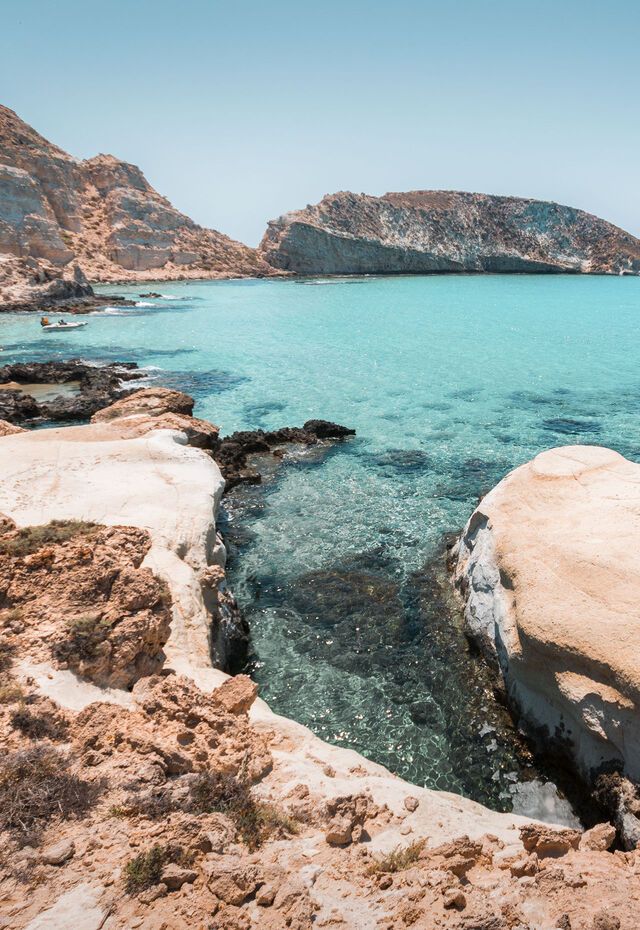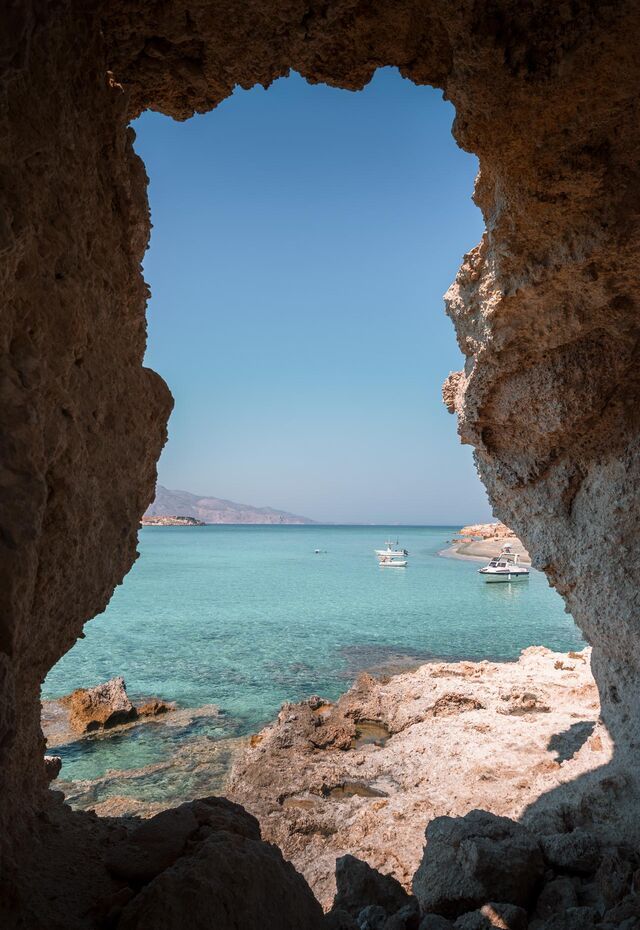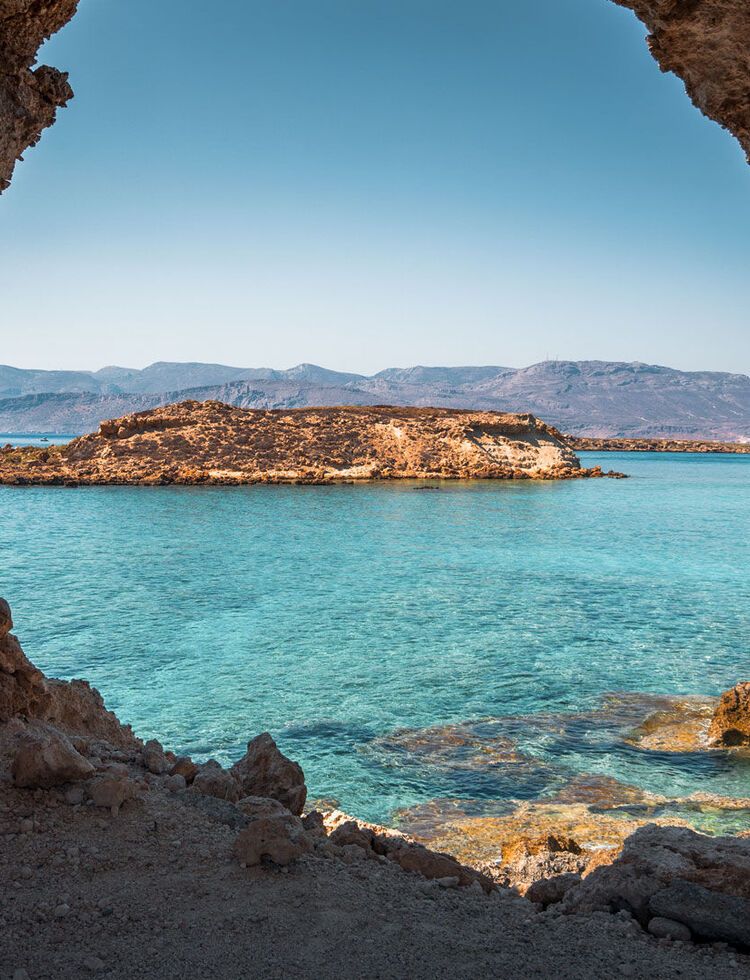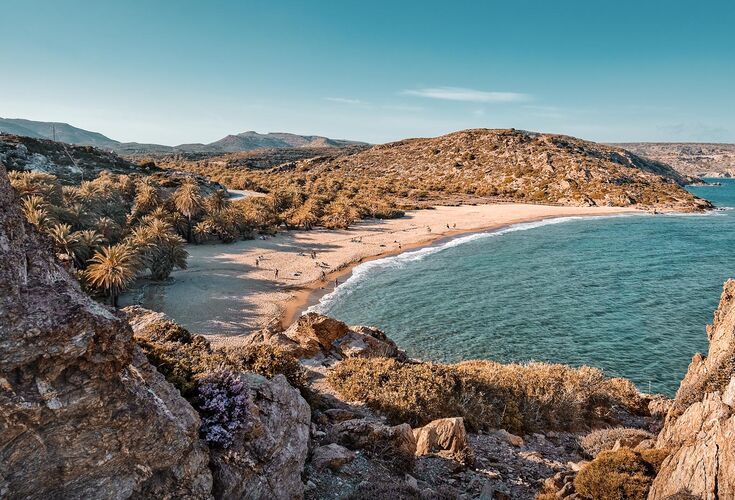A boat trip to Crete’s desert island of Koufonisi


OVERVIEW
A boat trip to Crete’s desert island of Koufonisi
It takes just 10 nautical miles to reach Africa if you are on holiday in Crete. Or so it feels when you travel to tiny Koufonisi, off the coast of the eastern Lasithi region, in the Libyan Sea.
Koufonisi offers a completely different experience to the rest of Crete. Here the landscape changes to an expanse of limestone (its ancient name, Lekfi, means white) and the interior resembles an African desert, with tamarisk trees and rare or indigenous shrubs and bushes, hiding small lizards and other heat-loving animals. And there are no fewer than 36 beaches, most with fine white or golden sand.
Though uninhabited now, Koufonisi held a special value for ancient Greeks, and its waters (rich in sea sponges and shells) attracted civilisations as varied as the Minoans and the Byzantines. In fact, there are Hellenistic and Roman ruins around the isle, some still in the process of being excavated.
You are free to explore a landscape sculpted over time by the elements. Tread carefully, though. The entire island has been given Natura 2000-protected status.
DON'T MISS
Highlights of Koufonisi island, Crete
Beaches
With 36 to choose from and all that white and gold sand, you won’t know where to start. So here’s a quick tour: Pigadi, on the north coast, is closest to where you’ll most likely be dropped off. Heading east, there’s beautiful Anemertia, which is sandy at one end and rocky at the other (nearby excavations have revealed an ancient theatre). Heading southeast, you reach the generous sandy bay of Hiliaderfia and Prosfora, the longest beach on the island. And, finally, there is secluded and untouched Asprougas.
The Church of Agios Nikolaos
Near Pigadi Beach, you’ll find the little Chapel of Agios Nikolaos, patron saint of sailors, and a well from which the beach gets its name. You’ll also find a path leading inland.
The Desert of Elias
As you explore inland, you’ll completely forget that you’re in Greece (perhaps only the sand dunes of Ammothines, on Limnos, are comparable). The name (Elias) comes from a centuries-old olive tree, which is the only tree in the desert and one of only four olive trees on the island.
The Lighthouse
At the end of the path, there’s a ruined lighthouse, alongside the remains of a Hellenistic-era temple. The lighthouse was built in the 1920s, partly with the remains of the temple that once stood an impressive 2.5m tall.
GET PLANNING
How do you get to Koufonisi island from Crete?
- There are daily crossings from Makri Gialo port (from approx. 10:30-17:30).
- Makri Gialo is around 39km (50mins) by car, taxi or KTEL bus from Sitia airport and 27km (34mins) from Ierapetra.
When is the best time to visit Koufonisi?
- Organised excursions to Koufonisi operate from May-October.
The peak summer months are the busiest and hottest, so May-June and September-October are the ideal periods to visit.
How much do Koufonisi island boat trips cost?
- Tickets to Koufonisi island are around €25 per person for organised trips. Renting a boat and skipper will cost more.
- Autumn
- Spring
- Summer
- Winter
How long are excursions to Koufonisi?
- The crossing takes approximately 1hr and organised trips usually include 5-6hrs on the island.
- Depending on which boat trip you choose, you may be served food and drink on board.
- All organised excursions are dependent on weather conditions and, if you hire your own vessel, be aware that there are some reefs around Koufonisi.
- There are no facilities on the beaches.
Make sure you have everything you need for a day in the sun:


